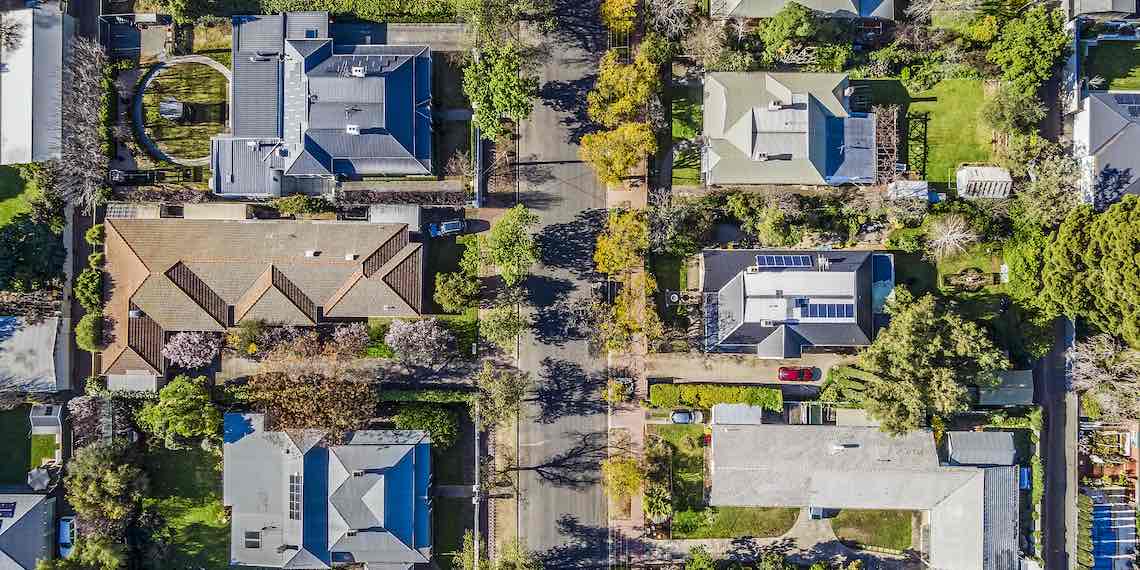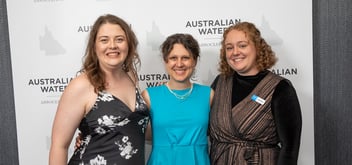Making urban spaces better with water-sensitive design

Creating more liveable cities depends on water-sensitive design, and as urban areas grow into busier and more dense places, water management becomes ever more important.
A study by University of Queensland PhD researcher Beata Sochacka is exploring how to estimate the benefits water-sensitive design can bring to cities. The quantitative method, which operates at a precinct level and incorporates two metrics, will be the subject of a presentation Sochacka will give at Ozwater’22 in Brisbane this month.
“I talk about what I'm doing as water-related liveability, and that's not really a concept that is being used,” Sochacka said.
“[I am] proposing quantitative indicators that could start the discussion about what do we want when we say urban water management should deliver liveability and liveability outcomes.
Sochacka’s research, which was funded through a scholarship from the Cooperative Research Centre for Water Sensitive Cities, uses the northern Adelaide suburb of Salisbury as a case study. Her indicators are straightforward ones: area and potential users of green space and of visible water, known as blue space.
“These are very simple metrics, yet they haven't been really measured in as much detail as I am doing in my research,” Sochacka said.
“I use this urban space categorisation system or inventory, which differentiates types of green and blue spaces. And because I do this, I can see what's the area, for example, of irrigated parks versus non irrigated conservational reserves. What's the area of gardens, what's the area of sports fields, for example. So this gives you a more nuanced insight into how the urban environment looks in that precinct.”
This allowed Sochacka to compare plans for the precinct, looking at the existing low-density design alongside a water-sensitive alternative, by using precinct designs developed under a Cooperative Research Centre for Water Sensitive Cities project.
“There would be more people living within that precinct with a redevelopment of both public and private realms,” Sochacka said of the proposed denser alternative.
Green and blue
“These [metrics] allow me to compare those two scenarios and say that, yes, clearly the water-sensitive densified precinct has more potential users of the urban green spaces.”
That is not simply because there would be more people to use that green space. The current plan includes areas that can be considered green space but are not accessible or amenable to users — a vacant lot, for instance.
The water-sensitive design, however, would transform some of these unused areas into usable green spaces, such as parks.
“Even though there is less green space in the water-sensitive scenario, there is more irrigated green space,” Sochacka said.
“And even though per capita you might have slightly less green space, you have more green space of better quality. And also there’s more diversity of different types of green space.”
Sochacka’s research also distinguished blue space from green space.
“I think this highlights that often we think of blue space, meaning landscapes that have visible water, as part of the green space,” she said.
“When we talk about water-sensitive urban design assets, like wetlands, they are often integrated into a park, or you have a creek running next to a park and it's considered still a park — so a green space.”
Her research also categorises some private property, such as a swimming pool, as blue space. And even though not all blue space is the same — people can’t swim in a park’s pond, but they can in a backyard swimming pool — its presence in a community is meaningful nevertheless.
“Just having water visible, even if you can't access it for direct recreational use, already generates a different set of experiences than green space,” Sochacka said.
“I think that those indicators can be quite useful, allowing us to not only consider how we can make those densifying neighbourhoods more liveable, but also how we consider what the role of water is in creating that greater liveability.”
Thinking local
There is a reason Sochacka chose to conduct her research at a precinct level, even though it is not a scale commonly used for urban water management. There are methodological problems with limitations with assessing water-related liveability at large urban scales such as a city, she said, but her tight focus permits her to focus on other questions.
“When you think about liveability, it's often argued that neighbourhood or precinct is the human scale, a scale at which you can talk about the amenity of specific urban spaces and their effect on people's residential satisfaction,” she said.
“There are some unique features that you can have just one in the whole city and it's still increasing your liveability, but most of the urban design that will affect you is within a certain walking radius from your home.”
That is why she believes her research could help with urban renewal or regeneration plans.
“So many cities around Australia have targets for infill developments,” she said.
“Hopefully this could mean opportunities for some urban regeneration where we not only fit more houses, but actually increase the urban liveability of those changing neighbourhoods for everyone.”
Interested in hearing more about Beata Sochacka's research into water-sensitive design? Register for Ozwater’22 here.

